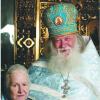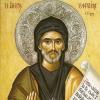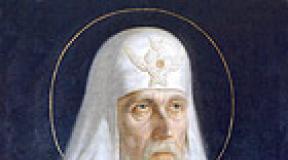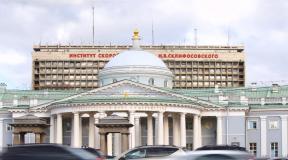Effective treatment of arrhythmias. Diagnostics and treatment of cardiac arrhythmias and conduction disorders Clinical guidelines Recommendations for cardiac arrhythmias
Cardiac arrhythmias are violations of the frequency, rhythm and (or) sequence of heart contractions: increased frequency (tachycardia) or decreased (bradycardia) rhythm, premature contractions (extrasystole), disorganization of rhythmic activity (atrial fibrillation), etc.
Tachycardia - three or more consecutive cardiac cycles with a frequency of 100 or more per minute.
Paroxysm - tachycardia with clearly defined beginning and end.
Persistent tachycardia - tachycardia lasting more than 30 seconds.
Bradycardia - three or more cardiac cycles with a frequency of less than 60 per minute.
Etiology and pathogenesis
Acute disturbances in the rhythm and conduction of the heart arrhythmias can complicate the course of various diseases of cardio-vascular system: IHD (including myocardial infarction and postinfarction cardiosclerosis), hypertension, rheumatic heart defects, hypertrophic, dilated and toxic cardiomyopathies, prolapse mitral valve and others. Sometimes cardiac arrhythmias develop due to the existence of congenital anomalies of the cardiac conduction system (additional atrioventricular connections in patients with Wolff-Parkinson-White syndrome - WPW, dual pathways in the AV connection in patients with reciprocal AV nodal tachycardia).
The reason for the development of arrhythmias can be congenital and acquired disorders of the process of repolarization of the myocardium of the ventricles of the heart, the so-called long Q-T interval syndromes (Jervell-Lang-Nielsen syndromes, Romano-Ward syndrome, Brugada syndrome). Arrhythmias often occur against a background of disorders (for example, hypokalemia, hypocalcemia, hypomagnesemia). Their appearance can be provoked by taking medicines- cardiac glycosides, theophylline; drugs that prolong the QT interval (antiarrhythmic drugs - quinidine, amiodarone, sotalol; some antihistamines - in particular terfenadine - see Appendix No. 3), as well as alcohol, drugs and hallucinogens (cocaine, amphetamines, etc.) or excessive consumption of caffeinated drinks.
Electrophysiological mechanisms of rhythm disturbances
Any electrophysiological mechanisms can underlie the occurrence of cardiac arrhythmias, including violations of automatism (accelerated normal automatism, pathological automatism), circulation of the excitation wave (micro and macro re-entry) both in anatomically determined structures of the myocardium (atrial flutter, WPW syndrome, double pathways conduction in the AV connection, some variants of ventricular tachycardia), and in functionally determined structures of the myocardium (atrial fibrillation, some types of ventricular tachycardia, ventricular fibrillation), trigger activity in the form of early and late post-depolarization (torsades de pointes, extrasystole).
Clinical presentation, classification and diagnostic criteria
On the prehospital stage it is advisable to divide all rhythm and conduction disturbances into those requiring urgent therapy and those not requiring.
1. Utilitarian classification of rhythm disturbances.
|
Rhythm and conduction disturbances requiring emergency treatment |
Rhythm and conduction disturbances that do not require emergency therapy |
|
Supraventricular arrhythmias |
Supraventricular arrhythmias |
|
- Paroxysmal reciprocal AV nodal tachycardia. Paroxysmal reciprocal AV tachycardia involving additional atrioventricular connections (WPW syndrome and other variants of ventricular premature excitation syndromes). - Paroxysmal atrial fibrillation lasting less than 48 hours, regardless of the presence of signs of acute left ventricular failure or myocardial ischemia -Paroxysmal atrial fibrillation lasting more than 48 hours, accompanied by tachysystole of the ventricles and a clinical picture of acute left ventricular failure (arterial hypotension, pulmonary edema) or coronary insufficiency (anginal pain, signs of myocardial ischemia on the ECG). A stable (persistent) form of atrial fibrillation, accompanied by tachysystole of the ventricles and a clinical picture of acute left ventricular (arterial hypotension, pulmonary edema) or coronary insufficiency (anginal pain, signs of myocardial ischemia on the ECG). A permanent form of atrial fibrillation, accompanied by tachysystole of the ventricles and the clinical picture of acute left ventricular (arterial hypotension, pulmonary edema) or coronary insufficiency (anginal pain, signs of myocardial ischemia on the ECG). -Paroxysmal atrial flutter lasting less than 48 hours. Paroxysmal form of atrial flutter lasting more than 48 hours, accompanied by tachysystole of the ventricles and a clinical picture of acute left ventricular (arterial hypotension, pulmonary edema) or coronary insufficiency (anginal pain, signs of myocardial ischemia on the ECG). |
- Sinus tachycardia. - Supraventricular (including atrial) extrasystole. Paroxysmal form of atrial fibrillation lasting more than 48 hours, not accompanied by tachysystole of the ventricles and the clinical picture of acute left ventricular (arterial hypotension, pulmonary edema) or coronary insufficiency (anginal pain, signs of myocardial ischemia on the ECG). A stable (persistent) form of atrial fibrillation, not accompanied by tachysystole of the ventricles and the clinical picture of acute left ventricular (arterial hypotension, pulmonary edema) or coronary insufficiency (anginal pain, signs of myocardial ischemia on the ECG). A permanent form of atrial fibrillation, not accompanied by tachysystole of the ventricles and the clinical picture of acute left ventricular (arterial hypotension, pulmonary edema) or coronary insufficiency (anginal pain, signs of myocardial ischemia on the ECG). Paroxysmal form of atrial flutter lasting more than 48 hours, not accompanied by tachysystole of the ventricles and the clinical picture of acute left ventricular (arterial hypotension, pulmonary edema) or coronary insufficiency (anginal pain, signs of myocardial ischemia on the ECG). |
|
VENTRICULAR ARRHYTHMIAS |
VENTRICULAR ARRHYTHMIAS |
|
-Ventricular fibrillation. -Sustained monomorphic ventricular tachycardia. -Sustained polymorphic ventricular tachycardia (including torsades de pointes, "pirouette" type) - Unstable ventricular tachycardia in patients with myocardial infarction. - Frequent, steamy, polytopic, ventricular premature beats in patients with myocardial infarction. |
-Ventricular premature beats. - Replacement rhythms (accelerated idioventricular rhythm, rhythm from the AV connection) with a heart rate> 50 beats per minute and not accompanied by serious hemodynamic disturbances. Reperfusion arrhythmias after successful thrombolytic therapy in patients with myocardial infarction (slow ventricular tachycardia, accelerated idiovertricular rhythm), not accompanied by serious hemodynamic disturbances. |
|
CONDUCTIVITY DISTURBANCES |
CONDUCTIVITY FAILURES |
|
- Sinus node dysfunction (sick sinus syndrome) with syncope, Morgagni-Edems-Stokes attacks or heart rate< 40 ударов в 1 минуту. -Av blockade II degree with syncope, attacks of Morgagni-Edems-Stokes or heart rate< 40 ударов в 1 минуту. - Complete AV block with syncope, Morgagni-Edems-Stokes attacks or heart rate< 40 ударов в 1 минуту. |
- Sinus node dysfunction without syncope and Morgagni-Edems-Stokes attacks -AV blockade of the I degree -AV blockade of the II degree without syncope and Morgagni-Edems-Stokes attacks -Complete AV block with heart rate> 40 beats per minute without syncope and Morgagni-Edems-Stokes attacks. - Mono-, bi-, and trifascicular blockade of the bundle of His bundle. |
Rhythm and conduction disturbances can be asymptomatic or manifest with vivid symptoms, ranging from palpitations, heart interruptions, “overturning” and “tumbling” of the heart and ending with the development of severe arterial hypotension, angina pectoris, syncope and manifestations of acute heart failure.
The final diagnosis of the nature of heart rhythm and conduction disturbances is established on the basis of an ECG.
Table 2. ECG criteria for the diagnosis of cardiac arrhythmias requiring urgent therapy.
|
ECG picture |
|
|
PAROXISMAL TACHYCARDIA WITH NARROW ORS COMPLEXES: Paroxysmal reciprocal AV nodal tachycardia. Orthodromic paroxysmal reciprocal AV tachycardia involving additional atrioventricular conduction pathways (various variants of WPW syndrome). Paroxysmal form of atrial flutter. Paroxysmal 2 form of atrial fibrillation |
The rhythm is correct, heart rate is 120-250 per minute, QRS complexes are narrow (less than 0.12 s), on standard ECG prongs P are not identified, they merge with the ventricular complex, located inside it. P waves can be detected when recording a transesophageal ECG, while the R-P interval does not exceed 0.1 s. The rhythm is correct, the heart rate is 120-250 per minute, the QRS complexes are narrow (less than 0.12 s). The ability to identify P waves on a standard ECG depends on the frequency of the rhythm. At heart rate< 180 ударов в 1 минуту зубцы P чаще всего могут быть идентифицированы на стандартной ЭКГ, при этом они располагаются позади комплекса QRS с интервалом R-P более 0,1 с. При более частых ритмах идентификация зубцов Р на стандартной ЭКГ затруднительна, однако они хорошо выявляются при регистрации чреспищеводной ЭКГ с интервалом R-P более 0,1 с. The QRS complexes are narrow (less than 0, 12 s.). There are no P waves, instead of them on the isoline there are sawtooth "waves of atrial flutter" (F waves), most distinct in leads II, III, aVF and V 1 with a frequency of 250-450 per minute. Ventricular complexes are narrow (less than 0.12 s) The heart rhythm can be either correct (with AV conduction from 1: 1 to 4: 1 or more) or incorrect if the AV conduction is constantly changing.The frequency of ventricular contractions depends on the degree of AV conduction (most often 2: 1) and usually is 90-150 in 1 min. The rhythm is irregular, the QRS complexes are narrow (less than 0.12 s.) There are no P waves, "atrial fibrillation waves" are detected - large or small-wave oscillations of the isoline, the frequency of atrial waves is 350-600 per minute, the RR intervals are different. |
|
PAROXISMAL TACHYCARDIA WITH WIDE QRS COMPLEX |
|
|
Paroxysmal reciprocal AV nodal tachycardia with aberrant conduction along the bundle branch |
The rhythm is correct, the heart rate is 120-250 per minute, the QRS complexes are wide, deformed (more than 0.12 s), the P waves are not identified on a standard ECG, they merge with the ventricular complex, being located inside it. P waves can be detected when recording a transesophageal ECG, while the R-P interval does not exceed 0.1 s. |
|
Antidromic paroxysmal reciprocal AV tachycardia involving additional atrioventricular conduction pathways (WPW syndrome). |
The rhythm is correct, the heart rate is 120-250 per minute, the QRS complexes are wide, deformed (more than 0.12 s). On a standard ECG, the P waves are not identified; they merge with the ventricular complex. However, they can be detected when recording a transesophageal ECG with an R-P interval of more than 0.1 s. |
|
Paroxysmal form of atrial fibrillation against the background of manifest WPW syndrome |
The rhythm is wrong, the heart rate can reach 250 - 280 per minute, the QRS complexes are wide, deformed (more than 0.12 s). On a standard ECG, as well as on a transesophageal ECG, P waves are not identified. On the transesophageal ECG, "atrial fibrillation waves" can be recorded. |
|
Paroxysmal form of atrial flutter against the background of manifest WPW syndrome |
The rhythm is correct, the heart rate can reach 300 per minute, the QRS complexes are wide, deformed (more than 0.12 s). No P waves are identified on a standard ECG. When registering a transesophageal ECG, “atrial flutter waves” (F waves) can be recorded before the QRS complexes in a ratio of 1: 1 with a P-R interval of less than 0.1 s. |
|
Persistent paroxysmal monomorphic ventricular tachycardia |
Arrhythmia, lasting more than 30 seconds, arising in the ventricles of the heart. The rhythm can be either right or wrong with a heart rate of 100 to 250 per minute. On a standard ECG, QRS complexes are wide (more than 0.12 s), having the same morphology. The characteristic feature is "gripping", i.e. jumping "normal sinus" QRS complexes and "confluent" QRS complexes, formed as a result of the propagation of excitation simultaneously both from the sinus node and from the excitation source located in the ventricles. |
|
Persistent paroxysmal polymorphic ventricular tachycardia (including pirouette type, torsades de pointes) |
Arrhythmia, lasting more than 30 seconds, arising in the ventricles of the heart. The rhythm can be either right or wrong with a heart rate of 100 to 250 per minute. On a standard ECG, QRS complexes are wide (more than 0.12 s), constantly changing their morphology. It occurs most often with prolonged QT interval syndrome. A sinusoidal pattern is characteristic - groups of two or more ventricular complexes with one direction are replaced by groups of ventricular complexes with the opposite direction. |
|
Unstable ventricular tachycardia in the acute phase of myocardial infarction |
Arrhythmia that occurs in the ventricles of the heart, in which a standard ECG reveals three or more consecutive wide (more than 0.12 s) QRS complexes with a frequency of 100-250 per minute, lasting no more than 30 seconds. |
|
VENTRICULAR EXTRASYSTOL Frequent, paired, polytopic in the acute phase of myocardial infarction |
Arrhythmia that occurs in the ventricles of the heart, in which extraordinary QRS complexes are recorded on a standard ECG, which are widened (more than 0.12 s), deformed, and have a discordant displacement of the ST segment and T wave. Compensatory pause (both complete and incomplete) can to be present or absent. |
|
CONDUCTIVITY DISTURBANCES Sinus node dysfunction (sick sinus syndrome) with syncope, Morgagni-Edems-Stokes attacks |
On a standard ECG, it is characterized by the appearance of a pronounced sinus bradycardia(less than 50 per minute) or episodes of sinus arrest lasting more than 3 seconds with periods of a replacement rhythm in the form of various bradyarrhythmias or tachyarrhythmias (bradycardia-tachycardia syndrome). |
|
2nd degree AV block with syncope, Morgagni-Edems-Stokes attacks |
Mobitz type I with Wenckebach-Samoilov periods is characterized by a progressive lengthening of the PR interval with each subsequent cardiac cycle before the next atrial excitation is not carried out on the ventricles. Mobitz type II is characterized by the absence of changes in the duration of the PR interval before one or more P waves suddenly fail to pass to the ventricles. The most common option is 2: 1 AV block. |
|
Complete AV block with syncope, Morgagni-Edems-Stokes attacks |
It is characterized by complete separation of the atrial and ventricular rhythms, in which not a single atrial excitation reaches the ventricles of the heart. As a rule, it is accompanied by severe bradycardia. |
When analyzing the clinical picture of paroxysmal heart rhythm disturbances, the ambulance doctor should receive answers to the following questions:
1) Is there a history of heart disease, thyroid gland, episodes of rhythm disturbances or unexplained loss of consciousness. It should be clarified whether such phenomena were noted among relatives, whether there were cases of sudden death among them.
2) What medications the patient has been taking recently. Some drugs provoke rhythm and conduction disturbances - antiarrhythmic drugs, diuretics, anticholinergics, etc. In addition, when conducting urgent therapy, it is necessary to take into account the interaction of antiarrhythmic drugs with other drugs.
Of great importance is the assessment of the effectiveness of drugs previously used to stop rhythm disturbances. So, if the patient is traditionally helped by the same drug, there are sufficient reasons to believe that it will be effective this time too. In addition, in difficult diagnostic cases, the nature of rhythm disturbances can be clarified ex juvantibus. So, with tachycardia with wide QRS, the effectiveness of lidocaine testifies, rather, in favor of ventricular tachycardia, and ATP, on the contrary, in favor of nodular tachycardia.
3) Whether there is a feeling of palpitations or irregularities in the work of the heart. Clarification of the nature of the heartbeat allows up to ECG roughly assess the type of rhythm disturbances - extrasystole, atrial fibrillation, etc. Arrhythmias that are not subjectively felt usually do not require urgent therapy.
4) How long ago there was a sensation of arrhythmia. The duration of the existence of arrhythmia depends, in particular, on the tactics of providing assistance with atrial fibrillation.
5) Whether there were fainting spells, choking, pain in the heart, involuntary urination or defecation, convulsions. It is necessary to identify possible complications of arrhythmia.
Treatment of supraventricular paroxysmal tachycardias with a narrow QRS complex at the prehospital stage
Algorithm of actions in case of paroxysmal reciprocal AV nodal tachycardia and orthodromic paroxysmal reciprocal AV tachycardia with the participation of additional atrioventricular connections (WPW syndrome) at the prehospital stage.
Medical tactics for paroxysm of supraventricular paroxysmal tachycardia with a narrow QRS complex is determined by the stability of the patient's hemodynamics. A steady (more than 30 minutes) decrease in systolic blood pressure below 90 mm Hg., The development of syncope, an attack of cardiac asthma or pulmonary edema, the onset of a severe anginal attack against a background of tachycardia are indications for immediate electrical cardioversion.
Vagus tests.
Against the background of stable hemodynamics and a clear consciousness of the patient, relief of paroxysm of supraventricular tachycardia with a narrow QRS complex begins with techniques aimed at irritating the vagus nerve and slowing down the conduction through the atrioventricular node.
Vagal testing is contraindicated in the presence of acute coronary syndrome, suspected pulmonary embolism, in pregnant women. The following techniques can increase the activity of the parasympathetic nervous system:
- holding your breath
- cough
- sharp straining after a deep breath (Valsalva test)
- induced vomiting
- swallowing a crust of bread
- immersion of the face in ice water
- Massage of the carotid sinus is permissible only in young people, with the confidence that there is no insufficient blood supply to the brain.
- The so-called Ashoff test (pressure on eyeballs) Not recommended.
- Pressing on the solar plexus area is ineffective, and hitting the same area is unsafe.
These techniques do not always help. With atrial fibrillation and atrial flutter, they cause a transient decrease in heart rate, and with ventricular tachycardia, they are generally ineffective. One of the differential diagnostic criteria to distinguish ventricular tachycardia from supraventricular tachycardia with widening of the QRS complexes is the reaction of the heart rhythm to vagal tests. With supraventricular tachycardia, the heart rate decreases, while with the ventricular rhythm remains the same.
Pharmacotherapy.
With the ineffectiveness of vagal tests, antiarrhythmic drugs can be successfully used to relieve supraventricular paroxysmal tachycardias with a narrow QRS complex (paroxysmal reciprocal AV nodal tachycardia and orthodromic paroxysmal reciprocal AV tachycardia with the participation of additional atrioventricular connections) at the prehospital stage.
On the one hand, since both in paroxysmal reciprocal AV nodal tachycardia and in orthodromic paroxysmal reciprocal AV tachycardia with the participation of additional atrioventricular connections, the antegrade link of the macro re-entry chain are structures in which Ca2 + ion channels dominate (slow AV path of connection), for their relief, pharmacological drugs can be used that block transmembrane calcium currents I Ca-L and I Ca-T entering the cell, or drugs that activate purine receptors AI. The first of them include calcium channel blockers (in particular verapamil or diltiazem) and - blockers (in particular obsidan), the second - adenosine or ATP.
On the other hand, since both in paroxysmal reciprocal AV nodal tachycardia and in orthodromic paroxysmal reciprocal AV tachycardia with the participation of additional atrioventricular junctions, structures in which Na + ion channels predominate (fast -pathway of AV junction or additional atrioventricular junction), for their relief, pharmacological drugs can be used that block the fast transmembrane sodium currents INa entering the cell. These include both class Ia antiarrhythmic drugs (novocainamide) and class Ic drugs (propafenone).
It is advisable to start drug therapy of paroxysmal supraventricular tachycardia with narrow QRS complexes with intravenous administration of adenosine or ATP. ATP at a dose of 10 - 20 mg (1.0 - 2.0 ml of a 1% solution) is injected intravenously in a bolus for 5-10 seconds. If there is no effect, another 20 mg (2 ml of a 1% solution) is re-administered after 2-3 minutes. The effectiveness of the drug in this type of rhythm disturbances is 90-100%. As a rule, it is possible to arrest paroxysmal supraventricular tachycardia within 20-40 seconds after the administration of ATP. When using adenosine (adenocorrhea), the starting dose is 6 mg (2 ml).
Intravenous adenosine administration also makes it possible to differentiate atrial flutter with 1: 1 conduction from supraventricular paroxysmal tachycardia with narrow QRS complexes: inhibition of AV conduction reveals characteristic flutter waves, but the rhythm is not restored.
Contraindications to the use of ATP are: AV-blockade II and III degree and sick sinus syndrome (in the absence of an artificial pacemaker); hypersensitivity to adenosine. It should also be borne in mind that the introduction of ATP or adenosine can provoke attacks in patients with bronchial asthma.
Adenosine and ATP are some of the safest drugs for the relief of paroxysmal reciprocal AV nodal tachycardia and orthodromic paroxysmal reciprocal AV tachycardia with the participation of additional atrioventricular connections, since they have a very short half-life (several minutes) and do not affect systemic blood pressure and contractile ventricular myocardial function. At the same time, it should be borne in mind that sometimes, especially in patients with sinus node dysfunction, stopping the paroxysm of supraventricular tachycardia with the help of intravenous administration of a bolus of adenosine (ATP) is accompanied by a short-term decrease in the restored sinus rhythm up to short (several seconds) periods of asystole. Usually, this does not require any additional therapeutic measures, however, if the asystole period is prolonged, it may be necessary to apply a precordial blow (extremely rarely - chest compressions in the form of several massage movements).
No less effective (90-100%) for the relief of paroxysmal reciprocal AV nodal tachycardia and orthodromic paroxysmal reciprocal AV tachycardia with the participation of additional atrioventricular connections is the use of a calcium antagonist verapamil (isoptin) or diltiazem. Verapamil is injected intravenously at a dose of 2.5-5 mg in 20 ml of physiological solution for 2-4 minutes (to avoid the development of collapse or severe bradycardia) with possible re-introduction 5-10 mg after 15-30 minutes with the maintenance of tachycardia and the absence of hypotension.
Side effects of verapamil include: bradycardia (up to asystole with rapid intravenous administration by suppressing the automatism of the sinus node); AV block (up to complete transverse with rapid intravenous administration); transient ventricular premature beats (stops independently); arterial hypotension due to peripheral vasodilation and negative inotropic action (up to collapse with rapid intravenous administration); increase or appearance of signs of heart failure (due to negative inotropic action), pulmonary edema. From the side of the central nervous system, dizziness is noted, headache, nervousness, lethargy; redness of the face, peripheral edema; feeling short of breath, shortness of breath; allergic reactions.
Verapamil should be used only for rhythm disturbances with a "narrow" QRS complex. In paroxysmal tachycardia with a "wide" QRS complex, especially with suspicion of paroxysmal atrial fibrillation against the background of obvious Wolff-Parkinson-White syndrome (WPW syndrome), verapamil is contraindicated, since it slows down the rate of antegrade conduction along the AV junction and does not affect the rate of antegrade conduction on an additional atrioventricular connection, which can lead to an increase in the frequency of excitation of the ventricles and to the transformation of atrial fibrillation into ventricular fibrillation. Diagnosis of WPW syndrome is possible with appropriate anamnestic indications and / or by assessing previous ECGs with sinus rhythm (PQ interval less than 0.12 s, QRS complex is broadened, delta wave is determined).
Other contraindications to the use of verapamil are: anamnestic data on the presence of sick sinus syndrome, AV block II and III degree; arterial hypotension (SBP less than 90 mm Hg), cardiogenic shock, pulmonary edema, severe chronic heart failure, hypersensitivity to the drug.
An alternative to verapamil in the relief of attacks of paroxysmal reciprocal AV nodal tachycardia and orthodromic paroxysmal reciprocal AV tachycardia with the participation of additional atrioventricular connections can be procainamide (novocainamide). The drug can also be used if verapamil is ineffective, but not earlier than 20-30 minutes after the administration of the latter and provided that stable hemodynamics are maintained. The effectiveness of procainamide is also quite high, but in terms of safety of use, it is significantly inferior to AFT and verapamil. Introduction method, side effects and contraindications, see the Atrial Fibrillation section.
For the relief of attacks of paroxysmal reciprocal AV nodal tachycardia and orthodromic paroxysmal reciprocal AV tachycardia with the participation of additional atrioventricular connections, it is also possible to use beta-blockers. However, due to the high efficacy of ATP and verapamil, as well as due to the high likelihood of arterial hypotension and severe bradycardia, the intravenous administration of such beta-blockers as obzidan, propranolol to relieve attacks of paroxysmal reciprocal AV nodal tachycardia and orthodromic paroxysmal reciprocal AV tachycardia with the participation of additional atrioventricular connections are rarely used. The safest use for this purpose is the short-acting beta-blocker esmolol (breviblock). Intravenous administration of propranolol at a dose of up to 0.15 mg / kg at a rate of no more than 1 mg / min should preferably be carried out under ECG and blood pressure monitoring.
Administration of beta-blockers is contraindicated in the presence of anamnestic data on bronchial obstruction, abnormalities of AV conduction, sick sinus syndrome; with severe chronic heart failure, arterial hypotension, pulmonary edema.
Electro-impulse therapy.
The indications for electroimpulse therapy at the prehospital stage in the relief of supraventricular tachycardias with narrow QRS complexes (paroxysmal reciprocal AV nodal tachycardia and orthodromic paroxysmal reciprocal AV tachycardia with the participation of additional atrioventricular junction) are clinical signs of acute left ventricular ventricular artery insufficiency (below 90 .Hg, arrhythmogenic shock, pulmonary edema), the occurrence of a severe anginal attack or syncope. As a rule, a discharge energy of 50-100 J is sufficient.
Indications for hospitalization.
Hospitalization is indicated for the first time registered paroxysms of supraventricular tachycardia with narrow QRS complexes, in the absence of the effect of drug therapy (at the prehospital stage, only one arrhythmic agent is used), in the event of complications that require electro-pulse therapy, with often recurrent rhythm disturbances.
Atrial fibrillation
AF itself is not a fatal heart rhythm disorder associated with a high risk of sudden arrhythmic death, unlike ventricular arrhythmias. However, there is one exception: AF in patients with manifest WPW syndrome can lead to extremely pronounced tachysystole of the ventricles and result in their fibrillation.
The main predictive adverse factors associated with AF are:
- the threat of thromboembolic complications (primarily ischemic strokes),
- development and (or) progression of heart failure.
In addition, a very important role for patients with AF is the quality of life (ability to work, palpitations, fear of death, lack of air, etc.), which often comes to the fore in the patients' subjective assessment of the severity of their arrhythmia and its prognosis for life. ...
There are 2 principal strategies in the management of patients with AF:
- restoration of sinus rhythm with the help of medical or electrical cardioversion and subsequent prevention of recurrent AF (rhythm control).
- control of the ventricular rate in combination with anticoagulant or antiplatelet therapy with persistent AF (rate control).
The choice of the most rational strategy for each individual patient depends on many factors, and the form of AF plays an important role in this.
According to the joint ACC / AHA / ESC Guidelines for the treatment of patients with AF, published in 2001, the following forms of AF are currently distinguished. This classification is somewhat different from the previously used classification of the European Society of Cardiology.
1. First identified AF. This is usually the diagnosis of the patient's first contact with the doctor when AF is first reported. In the future, this form of FP is transformed into one of the following.
2. Paroxysmal AF. The most important distinguishing feature of this form of AF is its ability to stop spontaneously. Moreover, in most patients, the duration of arrhythmia is less than 7 days (most often less than 24 hours).
The most common treatment strategy for patients with paroxysmal AF is to restore sinus rhythm, followed by drug prevention of recurrent arrhythmias.
From a practical point of view, it is important that before the restoration of sinus rhythm in patients with paroxysmal AF lasting less than 48 hours, full anticoagulant preparation is not required, they can be limited to intravenous administration of 5.000 units. heparin.
Patients with paroxysmal AF, lasting more than 48 hours before the sinus rhythm is restored, should begin a full 3-4 week anticoagulant preparation with warfarin under the control of INR (target value from 2.0 to 3.0), followed by its administration for at least 4 weeks after successful cardioversion.
It should be understood that in patients with paroxysmal AF lasting more than 48 hours, the restoration of sinus rhythm can occur spontaneously (which is a characteristic feature of this form of AF) during the first week of started anticoagulant therapy.
3. Stable (persistent, persistent) form of AF. The most important distinguishing feature of this form of AF is its inability to stop spontaneously, but it can be corrected with medical or electrical cardioversion. In addition, the stable form of AF is characterized by a significantly longer duration of existence than the paroxysmal form of AF. The time criterion for a stable form of AF is its duration of more than 7 days (up to a year or more).
If earlier, the strategic goal in patients with a stable form of AF was to restore the sinus rhythm followed by an attempt at drug prevention of arrhythmia recurrence (rhythm control), now it seems that in a certain category of patients with a stable form of AF it is possible to use an alternative strategy - preservation of AF with control of the ventricular rate in combination with anticoagulant or antiplatelet therapy (rate control).
If in patients with persistent AF, the doctor chooses a strategy to restore sinus rhythm, then it is necessary to conduct a full-fledged anticoagulant therapy under the control of the INR (target value from 2.0 to 3.0), which includes 3-4 weeks of warfarin preparation before restoration of sinus rhythm and at least 4 weeks of warfarin therapy after successful cardioversion.
3. Permanent form of AF. The permanent form includes those cases of AF that cannot be eliminated with medical or electrical cardioversion, regardless of the duration of the arrhythmia.
The strategic goal in patients with persistent AF is to control the ventricular rate in combination with anticoagulant or antiaggregant therapy.
There is no doubt that the temporal criteria used to divide AF into paroxysmal and persistent forms are rather arbitrary. However, they are important for making the right decision about the need for anticoagulant therapy before the restoration of sinus rhythm.
The question of which of the 2 treatment strategies for paroxysmal and persistent AF, restoration and maintenance of sinus rhythm or control of the ventricular rate, is better seems to be rather complicated and far from clear, although in recent years there has been some progress.
On the one hand, formal logic and prognostically unfavorable factors associated with AF suggest that maintaining sinus rhythm with chronic antiarrhythmic drug use is preferable. On the other hand, there is no doubt that maintaining sinus rhythm with the help of constant intake of class I A, I C or III antiarrhythmic drugs is associated with a real possibility of developing proarrhythmic effects, including fatal ventricular arrhythmias. At the same time, refusal to restore and maintain sinus rhythm requires constant anticoagulant therapy, associated with an increased risk of bleeding and the need for frequent monitoring of the level of anticoagulation.
Thus, an ambulance doctor at the stage of first contact with a patient with one or another form of atrial fibrillation needs to solve several rather difficult questions:
1. Does this patient, in principle, need to restore the sinus rhythm, or does he need medical correction of the ventricular rate (the form of atrial fibrillation, its duration, the size of the left atrium, a history of thromboembolic complications, the presence of electrolyte disorders, thyroid disease).
2. To assess the safety of restoration of sinus rhythm at the prehospital stage: the presence of valvular heart defects, severe organic myocardial damage (postinfarction cardiosclerosis, dilated cardiomyopathy, severe myocardial hypertrophy), thyroid diseases (hyper- and hypothyroidism), the presence and severity of chronic heart failure.
3. If the patient needs to restore the sinus rhythm, then whether it should be done at the prehospital stage, or this procedure should be carried out routinely in a hospital after the necessary preparation.
4. If the patient needs to restore the sinus rhythm at the prehospital stage, it is necessary to choose the method of its restoration: drug or electrical cardioversion.
Prehospital atrial fibrillation treatment
The decision on the need to restore sinus rhythm at the prehospital stage is primarily due to a combination of 2 factors: the form of atrial fibrillation, and the presence and severity of hemodynamic disorders and myocardial ischemia.
It is necessary to try to restore sinus rhythm at the prehospital stage in the following situations:
1. Paroxysmal form of atrial fibrillation lasting less than 48 hours, regardless of the presence of complications: acute left ventricular failure (arterial hypotension, pulmonary edema) or coronary insufficiency (anginal pain, signs of myocardial ischemia on the ECG).
2. Paroxysmal form of atrial fibrillation lasting more than 48 hours, and a stable form of atrial fibrillation, accompanied by severe tachysystole of the ventricles (heart rate 150 or more in 1 minute) and a clinical picture of severe acute left ventricular failure, corresponding to the classification of Killip III and IV class (pulmonary alveolar edema and / or cardiogenic shock) or clinical and ECG picture of acute coronary syndrome with and without elevation of the ST segment.
For all other forms of atrial fibrillation listed below and requiring emergency treatment, one should not seek to restore sinus rhythm in the prehospital phase.
1. Paroxysmal atrial fibrillation lasting more than 48 hours, accompanied by moderate ventricular tachysystole (less than 150 in 1 minute) and a clinical picture of moderately severe acute left ventricular failure, corresponding to the Killip class I and II (shortness of breath, stagnant rales in the lower parts of the lungs, moderate arterial hypotension) or moderate severe coronary insufficiency (anginal pain without signs of myocardial ischemia on the ECG).
2. A stable (persistent) form of atrial fibrillation, accompanied by a moderate tachysystole of the ventricles (less than 150 per 1 minute) and a clinical picture of moderately severe acute left ventricular failure, corresponding to the Killip classification of I and II classes (shortness of breath, congestive moist rales in the lower parts of the lungs, moderate arterial hypotension) or moderate severe coronary insufficiency (anginal pain without signs of myocardial ischemia on the ECG).
3. Permanent form of atrial fibrillation, accompanied by tachysystole of the ventricles and the clinical picture of acute left ventricular of any severity or coronary insufficiency of any severity.
In all these situations, at the prehospital stage, it is advisable to limit ourselves to drug therapy aimed at lowering the heart rate, reducing the signs of acute left ventricular failure (correcting blood pressure, stopping pulmonary edema) and stopping pain syndrome with the subsequent hospitalization of the patient.
There are 2 ways to restore sinus rhythm in atrial fibrillation at the prehospital stage: drug and electrical cardioversion.
Medical cardioversion at the prehospital stage can be used to arrest atrial fibrillation, which is not accompanied by hemodynamic disorders and when the value of the corrected Q-T interval ECG less than 450 ms.
If there are indications for stopping atrial fibrillation at the prehospital stage in patients with severe hemodynamic disorders (pulmonary edema, cardiogenic shock), electrical cardioversion should be used.
Algorithm of actions at the prehospital stage with newly diagnosed atrial fibrillation.
Algorithm of actions at the prehospital stage with paroxysmal atrial fibrillation lasting less than 48 hours.

Algorithm of actions at the prehospital stage with paroxysmal atrial fibrillation lasting more than 48 hours


Algorithm of actions at the prehospital stage with a stable form of atrial fibrillation.


Algorithm of actions at the prehospital stage with a constant form of atrial fibrillation.


Pharmacotherapy.
Unfortunately, for carrying out medical cardioversion at the prehospital stage, an ambulance doctor has only one drug belonging to class I A antiarrhythmic drugs - novocainamide. To stop atrial fibrillation, novocainamide is administered intravenously slowly at a dose of 1000 mg for 8-10 minutes. (10 ml of 10% solution, brought to 20 ml with isotonic sodium chloride solution) with constant monitoring of blood pressure, heart rate and ECG. At the moment of restoration of sinus rhythm, the administration of the drug is stopped. Due to the possibility of lowering blood pressure, it is administered in a horizontal position of the patient, with a prepared syringe with 0.1 mg of phenylephrine (mezatone).
With an initially lowered blood pressure, 20-30 μg of mezatone (phenylephrine) is collected in one syringe with procainamide.
The effectiveness of novocainamide in relieving paroxysmal atrial fibrillation in the first 30-60 minutes after administration is relatively low and amounts to 40-50%.
Side effects include: arrhythmogenic effect, ventricular arrhythmias due to prolongation of the QT interval; deceleration of atriventricular conduction, intraventricular conduction (occur more often in the damaged myocardium, are manifested on the ECG by widening of the ventricular complexes and blockade of the legs of the bundle of His); arterial hypotension (due to a decrease in the strength of the heart contractions and vasodilatory action); dizziness, weakness, impaired consciousness, depression, delirium, hallucinations; allergic reactions.
One of the potential dangers of using novocainamide for arresting atrial fibrillation is the possibility of transforming atrial fibrillation into atrial flutter with a high rate of conduction to the ventricles of the heart and the development of arrhythmogenic collapse. This is due to the fact that novocainamide, which is a blocker of Na + channels, slows down the rate of conduction of excitation in the atria and simultaneously increases their effective refractory period. This leads to the fact that the number of excitation waves circulating in them in the atria begins to gradually decrease and immediately before the restoration of the sinus rhythm can be reduced to one, which corresponds to the transition of atrial fibrillation to atrial flutter.
In order to avoid such a complication during the relief of atrial fibrillation with the help of novocainamide, it is recommended to inject 2.5 - 5.0 mg of verapamil (isoptin) intravenously before starting its use. On the one hand, this makes it possible to slow down the rate of conduction of excitations along the AV connection, and thus, even in the case of transformation of atrial fibrillation into atrial flutter, to avoid severe tachysystole of the ventricles. On the other hand, in a small number of patients, verapamil itself may be a sufficiently effective antiarrhythmic drug to arrest atrial fibrillation.
Contraindications to the use of procainamide are: arterial hypotension, cardiogenic shock, chronic heart failure; sinoatrial and AV blockade II and III degree, intraventricular conduction disturbances; lengthening of the QT interval and indications of a history of tachycardia episodes; severe renal failure; systemic lupus erythematosus; hypersensitivity to the drug.
Amiodarone, given the peculiarities of its pharmacodynamics, cannot be recommended as a remedy. quick recovery sinus rhythm in patients with atrial fibrillation.
In the arsenal of medical cardioversion of atrial fibrillation, a new, extremely effective domestic drug, belonging to the III class of antiarrhythmic drugs - nibentan. The drug exists only in the form for intravenous administration. Its effectiveness in relieving paroxysmal atrial fibrillation in the first 30-60 minutes after administration is about 80%. However, given the possibility of the development of such serious proarrhythmic effects as polymorphic ventricular tachycardia of the "pirouette" type, the use of nibentan is possible only in hospitals, in the conditions of intensive observation units and cardiac intensive care units. Nibentan cannot be used by ambulance doctors.
Often, in the presence of tachysystole and in the absence of indications for restoration of sinus rhythm in patients with atrial fibrillation at the prehospital stage, it is required to reduce the heart rate to 60 - 90 per minute.
The means of choice for monitoring the heart rate are cardiac glycosides: 0.25 mg of digoxin (1 ml of a 0.025% solution) in 20 ml of isotonic sodium chloride solution is injected intravenously in a slow bolus. Further tactics are determined in the hospital.
Side effects of digoxin (manifestations of digitalis intoxication): bradycardia, AV block, atrial tachycardia, ventricular premature beats; anorexia, nausea, vomiting, diarrhea; headache, dizziness, blurred vision, syncope, agitation, euphoria, drowsiness, depression, sleep disturbances, confusion.
Contraindications to the use of digoxin.
1. Absolute: glycosidic intoxication; hypersensitivity to the drug.
2. Relative: severe bradycardia (negative chronotropic effect); AV block II and III degree (negative dromotropic effect); isolated mitral stenosis and normo- or bradycardia (the danger of dilatation of the left atrium with aggravation of left ventricular failure due to increased pressure in its cavity; the risk of developing pulmonary edema due to an increase in the contractile activity of the right ventricle and an increase in pulmonary hypertension); idiopathic hypertrophic subaortic stenosis (the possibility of increasing obstruction of the exit from the left ventricle due to contraction of the hypertrophied interventricular septum); unstable angina pectoris and acute myocardial infarction (risk of increased myocardial oxygen demand, as well as the possibility of myocardial rupture in transmural infarction myocardium due to increased pressure in the left ventricular cavity); atrial fibrillation against the background of obvious WPW syndrome (improves conduction along additional pathways, while slowing down the rate of conduction of excitation along the AV junction, which creates the risk of increased ventricular rate and development of ventricular fibrillation); ventricular premature beats, ventricular tachycardia.
No less effective drugs than cardiac glycosides, calcium channel blockers (verapamil, diltiazem) and beta-blockers are used to achieve a slowdown in heart rate in atrial fibrillation.
Electro-impulse therapy.
The initial discharge energy is 100-200 kJ. With a discharge inefficiency of 200 kJ, the discharge energy is increased up to 360 kJ.
Indications for hospitalization.
Newly diagnosed atrial fibrillation; paroxysmal form of atrial fibrillation, not amenable to drug cardioversion; paroxysmal form of atrial fibrillation, accompanied by hemodynamic disorders or myocardial ischemia, which could be stopped with medication or with the help of electrical cardioversion; a stable form of atrial fibrillation to resolve the issue of the advisability of restoring sinus rhythm; with the development of complications of antarrhythmic therapy; often recurrent paroxysms of atrial fibrillation (for the selection of antiarrhythmic therapy). With a constant form of atrial fibrillation, hospitalization is indicated for high tachycardia, an increase in heart failure (for the correction of drug therapy).
Arrhythmias are a group of diseases associated with changes in the formation or conduction of an intracardial electrical impulse. They develop at any age, but are more common in older people suffering from atherosclerotic vascular lesions, ischemic heart disease. Most types of pathology are not life-threatening and have a chronic course. Few of them pose a threat of death and require resuscitation benefits.
Heart rhythm disturbances are treated with antiarrhythmic drugs, restorative and cardiotropic drugs, and electro-pulse therapy. Surgical restoration of heart rate is also performed (installation of a pacemaker).
What is heart rhythm disturbance
The term is understood as a change in the frequency, order or nature of coronary contractions, provoked by organic or functional failures and going beyond the normal reference values. The disease develops in violation of the mission of the atrioventricular or sinus-atrial node, the appearance of additional areas of ectopic activity in the ventricles or atria, early or late depolarization of the myocardium. In addition, a rhythm failure occurs when the impulse is excessively inhibited during its movement along the pathways (AV node, His bundle). In severe cases, a complete blockage develops.
Arrhythmia is considered several conditions, such as tachycardia (including paroxysmal), bradycardia, extrasystole, atrial fibrillation, ventricular fibrillation. Each of them has its own pathogenetic mechanism, features of the course and therapy. ICD-10 code - I44 - I49. Physiological acceleration of the heart rate that occurs after physical exertion is not a disease. Such processes take place on their own, within 2–5 minutes after the termination of work.
Classification
The division of arrhythmias into groups occurs according to the location of the focus of pathology and the peculiarities of the course of the process. According to the localization of the affected area, two forms of the disease are distinguished: supraventricular and ventricular. Each of them is divided into several types in accordance with the existing changes in the work of the heart.
Tachycardia
Heart rate acceleration above 90 beats per minute. With atrial localization of the pathological focus, the ratio of arterial and ventricular activity is normal. With increased activity from the ventricles, asynchronization is noted. It can persist permanently or proceed in a paroxysmal form. In this case, heart attacks occur periodically, regardless of the impact of external factors.
Bradycardia
Deceleration of heart rate to 60 beats or less, caused by impaired passage of the impulse, weakness or complete cessation of the pacemaker. With the blockade of the CA-node, the frequency of contractions decreases to 60–65, the AV connection: to 30–40 times per minute. In the latter case, the function of the formation of electrical activity is taken over by the His bundle, which is physically unable to issue more frequent commands to contract the myocardium.
Extrasystole
Extraordinary beats, in which the rhythm as a whole is not lost. Normally healthy person there are 10 unplanned heart beats per day. Their more frequent occurrence indicates coronary changes. Pathology proceeds in the form of bigeminy or trigeminia (e / s occurs after 2 or 3 normal contractions, respectively).
Fibrillation
It is a chaotic contraction of myocardial fibers, in which it is not able to fully pump blood. A similar failure in the work of the atria also occurs in a chronic form. Ventricular fibrillation causes cardiovascular failure and death of the patient.
Congenital rhythm disturbances
These include the syndrome of a prolonged or shortened QT interval, Brugada, polymorphic ventricular tachycardia. The reasons are dysfunction of ion channels, incurable genetic developmental pathology. The disease manifests itself in the form of a change in intracardiac conduction, a violation of the correct ratio of polarization and depolarization processes.
The given classification is incomplete. In reality, each of the points is subdivided into varieties, which are impractical to consider in the format of an article.
Symptoms
The clinical picture in patients with one or another type of arrhythmia is nonspecific. There are complaints of worsening health, chest discomfort, dizziness, weakness. With tachycardia, there is a sensation of palpitations. Decreased bradycardia blood pressure, can lead to the development of syncope. Failures of the type of ventricular extrasystole are not clinically manifested. They are found during electrocardiography.
An objective examination of the patient helps to identify an increase in the apical impulse, an increase in the pulse rate above 90 beats per minute with tachycardia, a drop below 60 beats / min - with bradyarrhythmia. Extrasystoles are also detected by PS. In this case, the doctor feels an extraordinary jolt under his fingers, which does not correspond to the existing rhythm. With a decrease in blood pressure, the patient is pale, disoriented, and discoordinated. The appearance of acrocyanosis, nausea, vomiting, headache is possible. Breathing is rapid, there is a decrease or compensatory increase in heart rate.
Ventricular fibrillation manifests itself with all the signs clinical death, including lack of respiratory activity, pulse on large arteries, consciousness. The patient's skin is deathly pale or marbled, and there are no reflexes. On the ECG, large or small waves are visible, there are no QRS complexes. With auscultation, it is not possible to hear heart sounds. The immediate start of resuscitation measures is shown.
Arrhythmia causes
First of all, changes in the coronary rate occur in patients with chronic pathologies circulatory system: congenital heart defects, ischemic disease, cardiomyopathy. Episodes can develop against the background of a hypertensive crisis, excessive mental shocks, experiences. Certain drugs affect coronary conduction and impulse formation: sympathomimetics, antidepressants, diuretics, antiarrhythmics. Used incorrectly, they can cause violations. Non-cardiac factors include smoking, drinking alcohol and caffeinated energy drinks, and hypoxia of any etiology. The rhythm can be lost in people suffering from thyrotoxicosis, carotid sinus syndrome.
Diagnostics
The main method for detecting arrhythmias is recording the electrophysical activity of the heart (ECG). In tachycardias that maintain a normal sinus pace, the R-R interval is less than 0.7 seconds. In this case, the shape of the QRS complex is not changed, the P waves are present before each graphical display of ventricular systole. With bradycardia, the time between the peaks "R" is more than 1 s. After the rhythm is restored, this indicator changes within 0.1–0.7 s. With ventricular extrasystoles, extraordinary QRS zones of a modified form are visible on the film. The atrial type of pathology is characterized by the correct shape of the ventricular complex and a change in the "P" wave. Atrial fibrillation is manifested by the disappearance or irregular appearance of the atrium activation pattern, small waviness of the T-Q area.
If there are complex arrhythmias, the diagnosis of which is impossible according to the results of a standard ECG, additional studies are carried out:
- Holter 24-hour cardiac monitoring.
- Massage of the carotid sinus.
- Transesophageal electrocardiography, which is used to determine the type of ventricular arrhythmia.
The localization of the focus is established with high accuracy using an invasive electrophysiological examination. As a rule, this is only necessary in preparation for cardiac surgery.
Treatment
The existing clinical guidelines contain three methods of therapy for cardiac arrhythmias: drug, hardware, surgical. Drug exposure is preferable, since the risk of complications is minimal. The operation is indicated only in cases where the disease is an immediate threat to life.
Medicines
Restore the rhythm with chemicals must be a cardiologist. Patients are prescribed medications such as Quinidine, Phenytoin, Allapinin, Atenolol, Amiodarone, Verapamil. All of them belong to the class of antiarrhythmic drugs. In addition, cardiac glycosides (Digoxin) or IF current inhibitors SU (Ivabradine) can be used. When the heart rate falls below normal, Atropine, Adrenaline, Dopamine, Levosimendan are administered.
Hardware methods
For mechanical elimination of the arrhythmogenic focus, its catheter ablation is used. During the procedure, the doctor pushes a thin conductor into the affected area and destroys it with an electrical impulse. If the patient is diagnosed with a critical decrease in heart rate due to the inconsistency of the pacemaker, a pacemaker is installed - a device that replaces the sinus-atrial node. With ventricular fibrillation, cardioversion is performed - exposure electric shock, aimed at restoring sinus rhythm.
Operative treatment
Open intervention is indicated only in extremely severe forms of the disease that threaten the patient's life in the short term. The work is carried out in a specialized operating room, which is equipped with a heart-lung machine, everything necessary to restore coronary activity. During the procedure, the doctor opens the heart and mechanically eliminates the existing violations.
Possible complications
Permanent arrhythmias can proceed without progression for many years. Sometimes they come to light only during a routine medical examination. At the same time, the efficiency of the heart decreases, the load on the myocardium and the vascular system increases. In such patients, the tolerance of physical work decreases, a general deterioration of the condition occurs, and jumps in blood pressure are possible. Over time, many develop chronic heart failure, accompanied by the appearance of internal and external edema, deterioration of tissue perfusion. With the development of ventricular fibrillation and the absence of an emergency medical care the patient dies.
Prevention and prognosis
To prevent heart disease, it is advisable to quit smoking, alcohol abuse, a sedentary lifestyle, and eating fatty foods. It is recommended to maintain body weight within acceptable values, allow only moderate dynamic loads (walking, jogging), and do a short warm-up every 1-2 hours during the working day. The prognosis for arrhythmias is relatively good. With supportive treatment, the patient's condition can be maintained at an acceptable level. A child with heart defects and rhythm disturbances is not taken into the army, he needs a life dispensary supervision... From this point of view, the prognosis for young patients is unfavorable.
Doctor's conclusion
Disorders in the work of the heart pose a danger to human health and life. but modern methods treatments allow to stop arrhythmias and restore normal coronary activity. In the diagnosis and treatment of cardiac anomalies, there are many nuances and subtleties that cannot be ignored. Therefore, independently restore heartbeat impossible. Recovery will come only with early treatment for help in a medical facility, following all the recommendations and prescriptions of a doctor.
RCHD (Republican Center for Healthcare Development of the Ministry of Health of the Republic of Kazakhstan)
Version: Archive - Clinical protocols MH RK - 2007 (Order No. 764)
Unspecified cardiac arrhythmia (I49.9)
general information
Short description
Rhythm disturbances are called changes in the normal physiological sequence of heart contractions as a result of disorders of the functions of automatism, excitability, conduction and contractility. These disorders are a symptom of pathological conditions and diseases of the heart and related systems, and have independent, often urgent clinical significance.
In terms of the response of ambulance specialists, cardiac arrhythmias are clinically significant, since they represent the greatest degree of danger and must be corrected from the moment they are recognized and, if possible, until the patient is transported to the hospital.
Distinguish three types of periarestal tachycardia: wide QRS complex tachycardia, narrow QRS complex tachycardia, and atrial fibrillation. However, the basic principles of treatment for these arrhythmias are general. For these reasons, they are all combined into one algorithm - the algorithm for the treatment of tachycardia.
Protocol code: E-012 "Disorders of heart rhythm and conduction"
Profile: emergency
Stage goal: arrhythmias preceding circulatory arrest require necessary treatment in order to prevent cardiac arrest and stabilize hemodynamics after successful resuscitation.
The choice of treatment is determined by the nature of the arrhythmia and the patient's condition.
It is necessary to call an experienced specialist for help as soon as possible.
Code (codes) for ICD-10-10:
I47 Paroxysmal tachycardia
I 47.0 Recurrent ventricular arrhythmia
I47.1 Supraventricular tachycardia
I47.2 Ventricular tachycardia
I47.9 Paroxysmal tachycardia, unspecified
I48 Atrial fibrillation and flutter
I49 Other cardiac arrhythmias
I49.8 Other specified cardiac arrhythmias
I49.9 Unspecified cardiac arrhythmia
Classification
Periodic arrhythmias (Arrhythmias with threatened cardiac arrest - AUOS), ERC, UK, 2000(or arrhythmias with severely reduced blood flow)
Bradyarrhythmia:
Sick sinus syndrome;
Atrioventricular block II degree, especially atrioventricular block II degree type Mobitz II;
III degree atrioventricular block with a wide QRS complex).
Tachycardia:
Paroxysmal ventricular tachycardia;
Torsade de Pointes;
Tachycardia with a wide QRS complex;
Tachycardia with a narrow QRS complex;
Atrial fibrillation;
PZhK - extrasystoles high degree danger according to Lawm.
Severe tachycardia. Coronary blood flow occurs mainly during diastole. With an excessively high heart rate, the duration of diastole is critically reduced, which leads to a decrease in coronary blood flow and myocardial ischemia. The frequency of the rhythm at which such disturbances are possible with a narrow complex tachycardia is more than 200 per 1 minute and with a wide complex tachycardia - more than 150 per 1 minute. This is due to the fact that wide-complex tachycardia by the heart is worse tolerated.
Factors and risk groups
Rhythm disturbances are not a nosological form. They are a symptom of pathological conditions.
Rhythm disturbances act as the most significant marker of damage to the heart itself:
Changes in the heart muscle as a result of atherosclerosis (CHD, myocardial infarction);
Myocarditis;
Cardiomyopathy;
Myocardial dystrophy (alcoholic, diabetic, thyrotoxic);
Heart defects;
Heart trauma.
Causes of non-cardiac arrhythmias:
Pathological changes in the gastrointestinal tract (cholecystitis, gastric ulcer and duodenum, diaphragmatic hernia);
Chronic diseases of the bronchopulmonary apparatus;
CNS disorders;
Various forms of intoxication (alcohol, caffeine, drugs, including antiarrhythmics);
Electrolyte imbalance.
The fact of arrhythmia, both paroxysmal and constant, is taken into account in the syndromic diagnosis of diseases underlying cardiac arrhythmias and conduction disorders.
Diagnostics
Diagnostic criteria
Adverse signs
Treatment for most arrhythmias is determined by whether the patient has adverse signs and symptoms.
The instability of the patient's condition due to the presence of arrhythmias is evidenced by the following:
1. Clinical symptoms of decreased cardiac output
Signs of activation of the sympatho-adrenal system: pallor of the skin, increased sweating, cold and damp extremities; an increase in signs of impaired consciousness due to a decrease in cerebral blood flow, Morgagni-Adams-Stokes syndrome; arterial hypotension (systolic pressure less than 90 mm Hg)
2. Sharp tachycardia
An excessively fast heart rate (more than 150 in 1 min.) Reduces coronary blood flow and can cause myocardial ischemia.
3. Heart failure
Pulmonary edema indicates left ventricular failure, and increased pressure in the jugular veins (swelling of the jugular veins), enlarged liver is an indicator of right ventricular failure.
4. Chest pain
The presence of chest pain means that the arrhythmia, especially tachyarrhythmia, is due to myocardial ischemia. The patient may or may not present complaints of increased rhythm. Can be noted when viewed "carotid dance".
Tachycardias
The diagnostic algorithm is based on the most obvious characteristics of the ECG (width and regularity of QRS complexes). This makes it possible to do without indicators reflecting the contractile function of the myocardium.
Treatment of all tachycardias is combined into one algorithm.
In patients with tachycardia and unstable condition (presence of threatening signs, systolic blood pressure less than 90 mm Hg, ventricular rate more than 150 per 1 minute, heart failure or other signs of shock), immediate cardioversion is recommended.
If the patient's condition is stable, then according to the ECG in 12 leads (or in one), tachycardia can be quickly divided into 2 options: with wide QRS complexes and with narrow QRS complexes. In the future, each of these two variants of tachycardia is subdivided into tachycardia with a regular rhythm and tachycardia with an irregular rhythm.
List of main diagnostic activities:
1. Tachycardia.
2. ECG monitoring.
3. ECG diagnostics.
Treatment abroad
Get treatment in Korea, Israel, Germany, USA
Get advice on medical tourism
Treatment
Medical care tactics
In hemodynamically unstable patients, when assessing the rhythm and subsequently during transportation, priority is given to ECG monitoring.
The assessment and treatment of arrhythmias is carried out in two directions: general state the patient (stable and unstable) and the nature of the arrhythmia.
There are three options for immediate therapy.
1. Antiarrhythmic (or other) medicines.
2. Electrical cardioversion.
3. Pacemaker (pacing).
Compared to electrical cardioversion, antiarrhythmic drugs act more slowly and the conversion of tachycardia to sinus rhythm is less effective when used. Therefore, drug therapy is resorted to in patients with stable conditions without adverse symptoms, and electrical cardioversion is usually preferred in patients with unstable conditions and with adverse symptoms.
Tachycardias, treatment algorithm
General activities:
1. Oxygen 4-5 liters per minute.
2. Intravenous access.
3. ECG monitor.
4. Assess the severity of the patient's condition.
5. Correct any electrolyte imbalance (ie K, Mg, Ca).
Specific activities
A. The patient is unstable
Presence of threatening signs:
Reduced level of consciousness;
Chest pain;
Systolic blood pressure less than 90 mm Hg;
Heart failure;
The rhythm of the ventricles is more than 150 in 1 minute.
Synchronized cardioversion is shown.
Electro-pulse therapy technique:
Conduct premedication (oxygen therapy, fentanyl 0.05 mg or promedol 10 mg IV);
Introduce into drug sleep (diazepam 5 mg IV and 2 mg every 1-2 minutes until falling asleep);
Monitor your heart rate;
Synchronize the electrical discharge with the R wave on the ECG;
No effect - repeat EIT, doubling the discharge energy;
No effect - repeat EIT with maximum power discharge;
No effect - enter the antiarrhythmic drug indicated for this arrhythmia;
No effect - repeat EIT with a maximum energy discharge.
For tachycardia with wide QRS complexes or atrial fibrillation, start with 200 J monophasic shock or 120-150 J biphasic shock.
For atrial flutter and tachycardia with regular narrow QRS complexes, start cardioversion with 100 J of monophasic shock or 70-120 J of biphasic shock.
Intubation equipment, including an electric suction device, must be ready near the patient.
1. Cardioversion with a sequential discharge of 200, 300, 360 J
2. Amiodarone 300mg intravenously for 10-20 minutes.
3. Repeat shock starting at 360 J discharge.
4. Amiodarone 900 mg in 24 hours intravenous drip
B. The patient is stable
ECG analysis, QRS width and regularity are assessed:
QRS more than 0.12 sec - wide complexes;
QRS less than 0.12 sec - narrow complexes.
1. Wide regular QRS is regarded as ventricular tachycardia:
A) Intravenous amiodarone 300 mg for 10-20 minutes;
B) Amiodarone 900 mg in 24 hours;
C) In case of obvious supraventricular tachycardia with blockade of the leg - intravenous adenosine, as in narrow complex tachycardia.
2. Wide QRS irregular (invite an expert to help - the intensive care team or intensive care unit).
Possible violations:
A) Atrial fibrillation with bundle block — treat as tachycardia with narrow QRS (see below);
B) Atrial fibrillation with extrasystole - consider the use of amiodarone;
C) Polymorphic ventricular tachycardia, i.e. Torsade de Pointes - Inject 2 g of magnesium sulfate intravenously over 10 minutes.
3. QRS narrow regular:
A) Use vagal maneuvers (straining tests, holding the breath, Valsava maneuver or alternative techniques - pressing on the carotid sinus from one side, blowing the plunger out of the syringe when there is little resistance on it);
B) Adenosine 6 mg intravenously rapidly;
C) If ineffective - adenosine 12 mg intravenously;
D) Continue ECG monitoring;
E) If the sinus rhythm is restored, then perhaps it is PSVT re-entry (paroxysmal supraventricular tachycardia), record a 12-lead ECG with sinus rhythm; in case of recurrence of PSVT - again adenosine 12 mg, consider the choice of alternative means for the prevention of arrhythmia;
Information
Head of the Department of Emergency and Emergency Medical Care, Internal Medicine No. 2, Kazakh National Medical University named after S. D. Asfendiyarova - Doctor of Medical Sciences, Professor Turlanov K.M. Employees of the Department of Emergency and Emergency Medical Care, Internal Diseases No. 2 of the Kazakh National Medical University named after S. D. Asfendiyarova: Ph.D., associate professor V.P. Vodnev; Candidate of Medical Sciences, Associate Professor Dyusembaev B.K .; Candidate of Medical Sciences, Associate Professor Akhmetova G.D .; Candidate of Medical Sciences, Associate Professor Bedelbaeva G.G .; Almukhambetov M.K .; Lozhkin A.A .; Madenov N.N.
Head of the Department of Emergency Medicine of the Almaty State Institute for Advanced Training of Doctors - Candidate of Medical Sciences, Associate Professor Rakhimbaev R.S. Employees of the Department of Emergency Medicine of the Almaty State Institute for Advanced Training of Doctors: Candidate of Medical Sciences, Associate Professor Silachev Yu.Ya .; Volkova N.V .; Khairulin R.Z .; Sedenko V.A.
Attached files
Attention!
- Self-medication can cause irreparable harm to your health.
- The information posted on the MedElement website and in the mobile applications "MedElement", "Lekar Pro", "Dariger Pro", "Diseases: Therapist's Guide" cannot and should not replace an in-person consultation with a doctor. Be sure to contact medical institutions if you have any medical conditions or symptoms that bother you.
- The choice of medicines and their dosage should be discussed with a specialist. Only a doctor can prescribe the necessary medicine and its dosage, taking into account the disease and the condition of the patient's body.
- MedElement website and mobile applications "MedElement", "Lekar Pro", "Dariger Pro", "Diseases: Therapist's Guide" are exclusively information and reference resources. The information posted on this site should not be used to unauthorized changes in the doctor's prescriptions.
- The editors of MedElement are not responsible for any damage to health or material damage resulting from the use of this site.
RCHD (Republican Center for Healthcare Development of the Ministry of Health of the Republic of Kazakhstan)
Version: Clinical Protocols of the Ministry of Health of the Republic of Kazakhstan - 2013
Ventricular tachycardia (I47.2)
Cardiology
general information
Short description
Approved by the minutes of the meeting
Expert Commission on the Development of Healthcare of the Ministry of Health of the Republic of Kazakhstan
No. 23 of 12.12.2013 No. 23
Ventricular arrhythmias- these are arrhythmias in which the source of ectopic impulses is located below the His bundle, that is, in the branches of the His bundle, in the Purkinje fibers or in the ventricular myocardium.
Ventricular premature beats (PVCs) called premature (extraordinary) contraction of the heart (from the above sections), directly related to the previous reduction in the basic rhythm.
Ventricular tachycardia it is considered to be three or more ventricular complexes with a frequency of 100 to 240 beats / min.
Ventricular fibrillation and flutter- these are scattered and multidirectional contractions of individual bundles of myocardial fibers, which lead to complete disorganization of the heart and cause an almost immediate cessation of effective hemodynamics - circulatory arrest.
Sudden cardiac death- this is a cardiac arrest for 1 hour, in the presence of a stranger, most likely due to ventricular fibrillation and not associated with the presence of signs that allow a diagnosis other than coronary heart disease to be made.
I. INTRODUCTORY PART
Protocol name: Ventricular heart rhythm disturbances and prevention of sudden cardiac death
Protocol code
ICD 10 code:
I47.2 Ventricular tachycardia
I49.3 Premature ventricular depolarization
I49.0 Ventricular fibrillation and flutter
I 46.1 Sudden cardiac death, as described
Abbreviations used in the protocol:
AAP - antiarrhythmic drugs
AAT - antiarrhythmic therapy
A-B - atrioventricular
AVURT - atrioventricular nodal reciprocal tachycardia
ACE - angiotensin converting enzyme
ACC - American College of Heart
ATC - antitachycardia stimulation
BVT - Rapid Ventricular Tachycardia
LBBB - left bundle branch block
BPNPG blockade right leg bundle of His
SCD - sudden cardiac death
I / V - intraventricular conduction
HIV - Human Immunodeficiency Virus
HCM - hypertrophic cardiomyopathy
GCS - hypersensitivity of the carotid sinus
DCMP - dilated cardiomyopathy
DPZhS - additional atrioventricular connection
VT - ventricular tachycardia
PVC - ventricular premature beats
Gastrointestinal tract - gastrointestinal tract
CHF - congestive heart failure
Ischemic heart disease
ICD - implantable cardioverter defibrillator
LV - left ventricle
MVP - interventricular septum
NVT - supraventricular tachycardia
AMI - acute myocardial infarction
PZhU - atrioventricular node
PT - atrial tachycardia
RFA - radiofrequency ablation
HF - heart failure
SPU - sinus-atrial node
CRT - cardiac resynchronization therapy
SSSU - sick sinus syndrome
TP - atrial flutter
TTM - transtelephone monitoring
LVEF - left ventricular ejection fraction
VF - ventricular fibrillation
FC - functional class
AF - atrial fibrillation
HR - heart rate
ECG - electrocardiogram
EKS - pacemaker
EFI - electrophysiological study
EOS - electric axle hearts
EchoCG - echocardiography
NYHA - New York Heart Association
WPW - Wolff-Parkinson-White syndrome
FGDS - fibrogastroduodenoscopy
XM - Holter monitoring
RW - Wasserman reaction
Date of protocol development: 01.05.2013
Protocol users: pediatricians, general practitioners, therapists, cardiologists, cardiac surgeons.
Classification
Clinical classification
Classification of ventricular arrhythmias B.Lown and M. Wolf (1971,1983.)
1. Rare single monomorphic extrasystoles - less than 30 per hour (1A - less than 1 per minute and 1B - more than 1 per minute).
2. Frequent single monomorphic extrasystoles - more than 30 per hour.
3. Polymorphic (multimorphic) ventricular extrasystoles
4. Repeated forms of ventricular arrhythmias:
4A - paired (couplets)
4B - group (volleys), including short episodes of ventricular tachycardia
5. Early ventricular extrasystoles - type R to T.
VT and PVC can be monomorphic and polymorphic.
Polymorphic VT can be bidirectional (more often with glycosidic intoxication), as well as bidirectional - fusiform, such as "pirouette" (with long QT syndrome).
Ventricular tachycardia can be paroxysmal or chronic.
If VT lasts more than 30 seconds, then it is called stable.
By frequency(number of beats per minute):
1. From 51 to 100 - accelerated idioventricular rhythm (Fig. 1).
2. From 100 to 250 - ventricular tachycardia (Fig. 2).
3. Above 250 - ventricular flutter.
4. Ventricular fibrillation - arrhythmic, chaotic activation of the heart. On the ECG, individual QRS complexes are not identified.
By duration:
1. Stable - more than 30 s duration.
2. Unstable - less than 30 seconds long.
The nature clinical course:
1. Paroxysmal
2. Non-paroxysmal
Diagnostics
II. METHODS, APPROACHES AND PROCEDURES OF DIAGNOSTICS AND TREATMENT
List of basic and additional diagnostic measures
Minimum examination for referral to hospital:
Consultation with a cardiologist
Complete blood count (6 parameters)
Blood electrolytes (Sodium, Potassium)
General urine analysis
Fluorography
Study of feces for worm eggs
Blood test for HIV.
Blood test at RW.
Blood test for markers of hepatitis "B" and "C".
EGD, in the presence of anamnestic data of an ulcer and existing sources of bleeding gastrointestinal tract(Gastrointestinal tract).
Basic (required, 100% chance):
Blood biochemistry (creatinine, urea, glucose, ALT, AST.)
Lipid spectrum of blood, persons over 40 years old with a history of myocardial infarction, chronic ischemic heart disease.
Coagulogram
Allergic test for medications(iodine, procaine, antibiotics).
Additional (less than 100% chance):
Holter ECG 24-hour monitoring
CAG for patients over 40 years old, according to indications (with a history of myocardial infarction, chronic ischemic heart disease)
Doppler ultrasonography of vessels lower limbs in the presence of indications (the presence of a clinic - a cold snap of the lower extremities, the absence of pulsation of the arteries of the lower extremities).
Exercise test
Diagnostic criteria
Complaints and anamnesis(the nature of the onset and manifestation of pain syndrome): palpitations, which is accompanied by dizziness, weakness, shortness of breath, pain in the heart, interruptions, pauses in heart contractions, episodes of loss of consciousness. In most of the patients, when taking anamnesis, they find various diseases myocardium. Patients usually have severe heart disease, which can be further complicated by complex ventricular ectopia (consisting of frequent ventricular premature beats, unstable ventricular arrhythmias, or both).
Physical examination
On palpation of the pulse, a frequent (from 100 to 220 per 1 min) and generally correct rhythm is noted.
Decrease in blood pressure.
Laboratory research
Biochemical analysis blood to the level of blood electrolytes: potassium, magnesium, calcium in the blood.
Lipid spectrum of blood, persons over 40 years old with a history of myocardial infarction, chronic ischemic heart disease.
Coagulogram
Instrumental research
ECG (On the ECG with PVC and VT: wide QRS complexes (more than 0.12 seconds) of various configurations depending on the location of the arrhythmogenic focus (discordant changes in the end part of the ventricular complex - ST segment, T wave) are usually recorded. compensatory pause.In VT, atrioventricular (a-c) dissociation and the presence of conducted and / or confluent QRS complexes are often observed.
Holter ECG 24-hour monitoring
Exercise test
Echocardiography in order to clarify the nature of heart disease, to determine the presence and extent of zones of a- and dyskinesia in the left ventricle and its function.
Doppler ultrasonography of the vessels of the lower extremities in the presence of indications (the presence of a clinic - cooling of the lower extremities, the absence of pulsation of the arteries of the lower extremities).
CAG for patients over 40 years old, according to indications (with a history of myocardial infarction, chronic ischemic heart disease)
Indications for specialist consultation: if necessary, by the decision of the attending physician.
Differential diagnosis
The main differential diagnostic ECGs are signs of tachyarrhythmias (with broadened QRS complexes).
Ventricular tachycardia can be tubally distinguished from supraventricular tachycardia with aberrant conduction. An electrophysiological study is required.
Treatment abroad
Get treatment in Korea, Israel, Germany, USA
Get advice on medical tourism
Treatment
Treatment goals
Elimination or reduction (by 50% or more) of repeated episodes of attacks of ventricular arrhythmias and prevention of primary and secondary sudden cardiac death (SCD).
Treatment tactics
1. Drug therapy aimed at stopping the paroxysm of ventricular tachycardia, stopping or reducing repeated attacks
2. Intracardiac electrophysiological examination of the heart, radiofrequency ablation of an arrhythmogenic focus.
3. If antiarrhythmic drugs are ineffective and there is no effect from catheter elimination of the source of tachyarrhythmia, implantation of a cardioverter-defibrillator or a resynchronization therapy device with cardioversion of defibrillation is necessary for primary and secondary prevention of sudden cardiac death.
Non-drug treatment: With acute left ventricular failure. With arrhythmic shock. Acute ischemia. External electro-impulse therapy should be done immediately, plus external cardiac massage is required.
Drug treatment
| A drug | Doses |
Class recommendations |
Evidence level | Note |
| Lidocaine | 100 mg per 1 min (up to 200 mg within 5 -20 min) intravenous stream. | IIb | C | Preferred for acute ischemia or myocardial infarction |
| Amiodarone | 150-450 mg IV slowly (over 10 - 30 min.) | IIa (with monomorphic VT) | C | especially useful when other drugs are ineffective. |
| I (with polymorphic VT) | WITH |
| A drug | Daily doses | Major side effects |
| Bisoprolol | 5 to 15 mg / day orally | |
| Amiodarone | saturating dose 600 mg for 1 month or 1000 mg for 1 week, then 100-400 mg | hypotension, heart block, toxic effects on the lungs, skin, discoloration of the skin, hypothyroidism, hyperthyroidism, corneal deposits, neuropathy optic nerve, interaction with warfarin, bradycardia, pirouette VT (rare). |
| Propafenone hydrochloride | dose 150 mg orally |
possible bradycardia, slowing of sinoatrial, AV and intraventricular conduction, a decrease in myocardial contractility (in predisposed patients), arrhythmogenic effect; when taken in high doses - orthostatic hypotension. Contraindicated in structural heart disease - EF ≤ 35%. |
| Carbethoxyamino-diethylaminopropionyl-phenothiazine | Dose from 50 mg to 50 mg, daily 200 mg / day or or up to 100 mg 3 times a day (300 mg / day) | hypersensitivity, sinoatrial blockade II degree, AV block II-III degree, blockade of intraventricular conduction, ventricular arrhythmias in combination with blockages of conduction according to the His system - Purkinje fibers, arterial hypotension, severe heart failure, cardiogenic shock, impaired liver and kidney function, age up to 18 years. With extreme caution - sick sinus syndrome, 1st degree AV block, incomplete bundle branch block, severe circulatory disorders, and intraventricular conduction disorders. Contraindicated in structural heart disease - EF ≤ 35%. |
| Verapamil | 5-10 mg IV at a rate of 1 mg per minute. | In idiopathic VT (QRS complexes such as right leg blockade of the His p. With deviation of the EOS to the left) |
| Metoprolol | From 25 to 100 mg orally 2 times a day | hypotension, HF, heart block, bradycardia, bronchospasm. |
Other treatments
Intracardiac electrophysiological examination (ICEFI) and radiofrequency catheter ablation (RFA).
Catheter radiofrequency ablation (RFA) of arrhythmogenic myocardial foci in patients with PVC and VT is performed in patients with ventricular arrhythmias refractory to antiarrhythmic therapy, as well as in cases where the patient prefers this intervention to pharmacotherapy.
Class I
Patients with tachycardias with wide QRS complexes, in whom the exact diagnosis is unclear after analyzing the available ECG records and for whom knowledge of the exact diagnosis is necessary for choosing a treatment strategy.
Class II
1. Patients with ventricular premature beats, who are unclear with the exact diagnosis after analyzing the available ECG records and for whom knowledge of the exact diagnosis is necessary for the choice of treatment tactics.
2. Ventricular premature beats, which are accompanied by clinical symptoms and ineffective antiarrhythmic therapy.
Class III
Patients with VT or supraventricular tachycardia with aberrant conduction or preexcitation syndrome, diagnosed on the basis of clear ECG criteria and for whom electrophysiological data will not influence the choice of therapy. However, the data obtained from the initial electrophysiological study in these patients can be considered as a guide to subsequent therapy.
Class I
1. Patients with symptomatic persistent monomorphic VT, if the tachycardia is resistant to drugs, or if the patient is intolerant or unwilling to continue long-term antiarrhythmic therapy.
2. Patients with ventricular tachycardia of the reentry type caused by blockade of the branch of the bundle branch.
3. Patients with persistent monomorphic VT and an implanted cardioverter-defibrillator who have multiple CDI events that are not controlled by reprogramming or concomitant drug therapy.
Class II
Unstable VT, which causes clinical symptoms if the tachycardia is resistant to the action of drugs, as well as if the patient is intolerant of drugs or does not want to continue long-term antiarrhythmic therapy.
Class III
1. Patients with drug-responsive VT, ICD, or surgical treatment if the therapy is well tolerated and the patient prefers it to ablation.
2. Unstable, frequent, multiple or polymorphic VTs that cannot be adequately localized with modern mapping techniques.
3. Symptomatic and clinically benign unstable VT.
Note: This protocol uses the following classes of recommendation and levels of evidence
B - satisfactory evidence of the benefits of the recommendations (60-80%);
D - satisfactory evidence of the benefits of the recommendations (20-30%); E - convincing evidence of the uselessness of the recommendations (< 10%).
Surgical intervention
Implantation of a cardioverter - defibrillator (ICD)- is performed for life-threatening ventricular arrhythmias, when pharmacotherapy and catheter RFA are ineffective. If indicated, the ICD is used in combination with antiarrhythmic therapy.
| The main indications for implantation of a cardioverter-defibrillator are: | ||||
| cardiac arrest due to VF or VT, but not associated with transient or reversible causes (level of evidence A); | spontaneous sustained VT in patients with organic defeat hearts (level of evidence B); | syncope of unknown origin, in which EPI is used to induce sustained VT with hemodynamic disturbances or VF, and pharmacotherapy is ineffective or drug intolerance is present (level of evidence: B); | unstable VT in patients with coronary artery disease who have undergone myocardial infarction and have LV dysfunction, in whom VF is induced by electrophysiological examination or stable VT that is not relieved by class 1 antiarrhythmics (level of evidence: B); | patients with LVEF of no more than 30-35% for the prevention of primary and secondary sudden cardiac death (patients who have experienced cardiac arrest). |
Implantation of a cardioverter defibrillator is not recommended:
1. Patients in whom the triggering mechanism of arrhythmia can be identified and eliminated ( electrolyte disturbances, overdose of catecholamines, etc.).
2. Patients with Wolff-Parkinson-White syndrome and atrial fibrillation complicated by ventricular fibrillation (they must undergo catheter or surgical destruction of the accessory pathway).
3. Patients with ventricular tachyarrhythmias, which can be triggered by electrical cardioversion.
4. Patients with syncope of unknown cause, in whom ventricular tachyarrhythmias are not induced by electrophysiological examination
5. With continuously recurrent VT or VF.
6. For VT or VF that can be treated with catheter ablation (idiopathic VT, fascicular VT).
Indications for hospitalization:
Ventricular tachycardia - planned and emergency.
Premature ventricular depolarization is planned.
Fibrillation and ventricular flutter - emergency and / or planned.
Sudden cardiac death - emergency and / or planned
Information
Sources and Literature
- Minutes of meetings of the Expert Commission on Healthcare Development of the Ministry of Health of the Republic of Kazakhstan, 2013
- 1. Bockeria L.A. - Tachyarrhythmias: Diagnosis and surgery- M: Medicine, 1989. 2. Bockeria L.A., Revishvili A.Sh. Catheter ablation of tachyarrhythmias: state of the art problems and development prospects // Bulletin of arrhythmology - 1988.- №8.- P.70. 3. Revishvili A.Sh. Electrophysiological diagnostics and surgical treatment of supraventricular tachyarrhythmias // Cardiology No. 11-1990, p. 56-59. 4. Recommendations for the treatment of patients with cardiac arrhythmias L.А. Bockeria, R.G. Oganov, A. Sh. Revishvili 2009 5. Akhtar M, Achord JL, Reynolds WA. Clinical competence in invasive cardiac electrophysiological studies. ACP / ACC / AHA Task Force on Clinical Privileges in Cardiology. J Am Coll Cardiol 1994; 23: 1258-61. 6. Blomstr m-Lundqvist and Scheinman MM et al. ACC / AHA / ESC Guidelines for the Management of Patients With Supraventricular Arrhythmias - Executive Summary A Report of the American College of Cardiology / American Heart Association Task Force on Practice Guidelines and the European Society of Cardiology Committee for Practice Guidelines (Writing Committee to Develop Guidelines for the Management of Patients With Supraventricular Arrhythmias) 7. Crawford MH, Bernstein SJ, Deedwania PC et al. ACC / AHA guidelines for ambulatory electrocardiography: executive summary and recommendations, a report of the American College of Cardiology / American Heart Association Task Force on Practice Guidelines (Committee to Revise the Guidelines for Ambulatory Electrocardiography). Circulation 1999; 100: 886-93. 8. Faster V, Ryden LE, Asinger RW et al. ACC / AHA / ESC guidelines for the management of patients with atrial fibrillation: executive sum¬mary: a report of the American College of Cardiology / American Heart Association Task Force on Practice Guidelines and the European Society of Cardiology Committee for Practice Guidelines and Policy Conferences (Committee to Develop Guidelines for the Management of Patients With Atrial Fibrillation) Developed in col¬laboration with the North American Society of Pacing and Electrophysiology. Circulation 2001; 104: 2118-50. 9. Flowers NC, Abildskov JA, Armstrong WF, et al. ACC policy statement: recommended guidelines for training in adult clinical cardiac electrophysiology. Electrophysiology / Electrocardiography Subcommittee, American College of Cardiology. J Am Coll Cardiol 1991; 18: 637-40. 10. Hall RJC, Boyle RM, Webb-Peploe M, et al. Guidelines for specialist training in cardiology. Council of the British Cardiac Society and the Specialist Advisory Committee in Cardiovascular Medicine of the Royal College of Physicians. Br Heart J 1995; 73: 1-24. 10. Hindricks G, for the Multicenter European Radiofrequency Survey (MERFS) investigators of the Working Group on Arrhythmias of the European Society of Cardiology. The Multicenter European Radiofrequency Survey (MERFS): complications of radiofrequency catheter ablation of arrhythmias, fur Heart J 1993; 14: 1644-53. 11. Josephson ME, Maloney JD, Barold SS. Guidelines for training in adult cardiovascular medicine. Core Cardiology Training Symposium (COCATS) Task Force 6: training in specialized electrophysiology, cardiac pacing and arrhythmia management. J Am Coll Cardiol 1995; 25: 23–6. 12. Scheinman MM, Huang S. The 1998 NASPE prospective catheter ablation registry. Pacing Clin Electrophysiol 2000; 23: 1020-8. 13. Scheinman MM, Levine JH, Cannom DS et al. for the Intravenous Amiodarone Multicenter Investigators Group. Dose-ranging study of intravenous amiodarone in patients with life-threatening ventricular tachyarrhythmias. Circulation 1995; 92: 3264-72. 14. Scheinman MM. NASPE survey on catheter ablation. Poems Clin Electrophysiol 1995; 18: 1474-8. 15. Zipes DP, DiMarco JP, Gillette PC et al. Guidelines for clinical intracardiac electrophysiological and catheter ablation procedures: a report of the American College of Cardiology / American Heart Association Task Force on Practice Guidelines (Committee on Clinical Intracardiac Electrophysiologic and Catheter Ablation Procedures), developed in collaboration with the North American Society of Pacing and Electrophysiology. J Am Coll Cardiol 1995; 26: 555-73.
- The information posted on the MedElement website and in the mobile applications "MedElement", "Lekar Pro", "Dariger Pro", "Diseases: Therapist's Guide" cannot and should not replace an in-person consultation with a doctor. Be sure to contact a healthcare provider if you have any medical conditions or symptoms that bother you.
- The choice of medicines and their dosage should be discussed with a specialist. Only a doctor can prescribe the necessary medicine and its dosage, taking into account the disease and the condition of the patient's body.
- MedElement website and mobile applications "MedElement", "Lekar Pro", "Dariger Pro", "Diseases: Therapist's Guide" are exclusively information and reference resources. The information posted on this site should not be used to unauthorized changes in the doctor's prescriptions.
- The editors of MedElement are not responsible for any damage to health or material damage resulting from the use of this site.



















